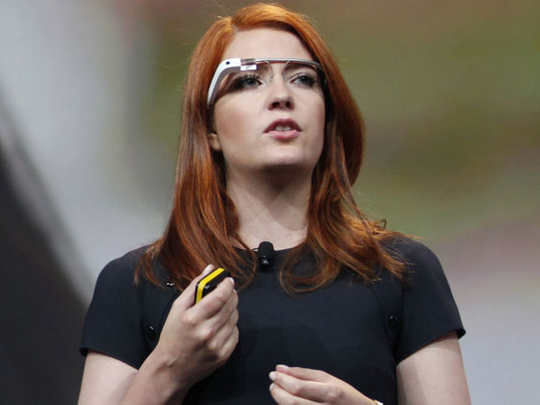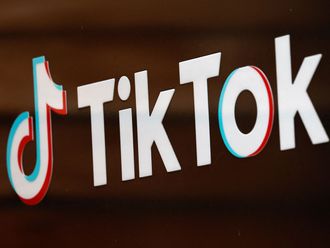
San Francisco Google glasses that overlay the internet on daily lives should hit the market within two years - technology the tech giant hopes will someday make fumbling with smartphones obsolete.
Google co-founder Sergey Brin offered the estimated timeline after a project update that included sky divers dropping in with a new version of “Glass” wearable computers.
“I’m so glad that worked,” Brin quipped after sky divers wearing the glasses streamed live video during their jump from an aeroplane to the roof of the San Francisco convention centre. “I wasn’t really expecting it to.”
The sky divers handed off a package to cyclists, who performed stunts as they rode to the edge of the Moscone Centre where they handed it off to a man who rappelled down the outside of the building to the third floor.
Another cyclist whisked the cargo the final length of its trip to a stage where Brin and other Google executives were kicking off the California-based company’s annual developers conference.
Brin opened the package to show an “Explorer” edition of the glasses that developers could buy for $1,500 (Dh5,517) to become the first people outside the company to shape the revolutionary eyewear before it gets to market. It will ship early next year and won’t be available for sale outside the three-day conference.
Google had two broad goals in mind: communications through images and quick access to information. The device has a camera to capture fleeting moments and allow others to see the world through your eyes.
Explorer edition glasses should ship early next year, and a version should be ready for the consumer market within a year after that, Brin said.
“Google Glass Explorer edition will be rough around the edges; you have to be into being on the bleeding edge,” Brin said of the effort to build a community of developers passionate about taking part in the project.
“This is really new technology and we really want all of you to help shape it.”
The eyewear features built-in camera, microphone and speaker technology and can synch to the Internet using wireless connections.
As with the sky divers, cyclists, and wall-walkers who took part in the keynote stunt, video through the eyes of wearers can be streamed live on Google’s social network.
Mini-screens in the glasses can display text messages, email or other digitized information from the Internet or mobile gadgets.
“It was kind of a nutty idea that somehow became real,” Brin said while discussing Glass after the keynote presentation.
“The notion that you could jump out of an air ship with it and still communicate your experience makes holding a smartphone or laptop seem pretty damn awkward,” he continued. “It’s about you being less of a slave to your device; it has been really liberating.”
Brin said that he wears a prototype pair of Google glasses much of the time as he and other members of the team he heads at the company’s X Lab refine the technology.
Google has been speaking with eyeglass frame companies about ideas for a consumer version of the glasses, which he expected would cost “significantly” less than the Explorer prototypes.
“I expect that in three or four years watching people hold a mobile phone in their hands and look down at it will start to be unusual and that this will be normal,” Google product manager Steve Lee said, pointing to his Glass eyewear.
The Glass team focused on frequent mobile Internet tasks such as messaging and sharing pictures and not on capabilities such as adding facial or object recognition, according to Brin.
“We definitely experimented with things like facial recognition; it is what a lot of people think about when you talk about a wearable computer,” Brin said.
“But it is not the most compelling,” he continued. “We have not been quite as excited about it as science fiction movies might be.”












